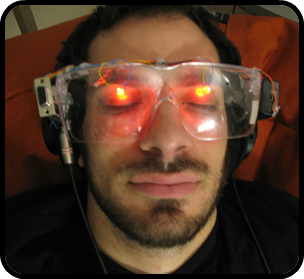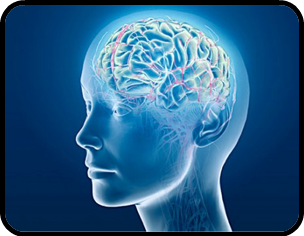







Sources
History
Physiology
Research
Overview
Treatment
A review of 20 studies on brainwave entrainment found that it is effective in improving cognition and behavioral problems, and alleviating stress and pain.
The results of a study on children with attention-deficit disorder found that AVS was more effective than neurofeedback for treating ADD symptoms.
A migraine headache study involving seven migraine sufferers found that AVS sessions reduced migraine duration from a pretreatment average of six hours to a posttreatment average of 35 minutes. Measuring 50 of the participants' migraines, 49 migraines decreased in severity and 36 were stopped when using AVS.
Another clinical study showed declines in depression, anxiety and suicidal ideation following a treatment program using AVS. A study by Berg and Siever used audio-visual entrainment devices on women suffering with seasonal affective disorder. Both depression and anxiety symptoms were reduced in participants, as compared to a placebo phase. Participants also reported improvements in their social lives, with increased happiness and sociability, decreased appetite, increased energy and weight loss. A study by Cantor and Stevens found significant decreases in depression scores in participants after four weeks of using AVS.
A study by Thomas and Siever showed that many people with chronic temporomandibular joint disorder (TMD) brace up when asked to relax. AVS at 10 Hz produced deep masseter muscle relaxation and finger warming within six minutes. Audio entrainment has shown promise as a singular therapeutic modality for treating jaw tension and TMD pain. AVS has been used to reduce jaw pain, patient anxiety and heart rate during dental procedures.
Treatment

